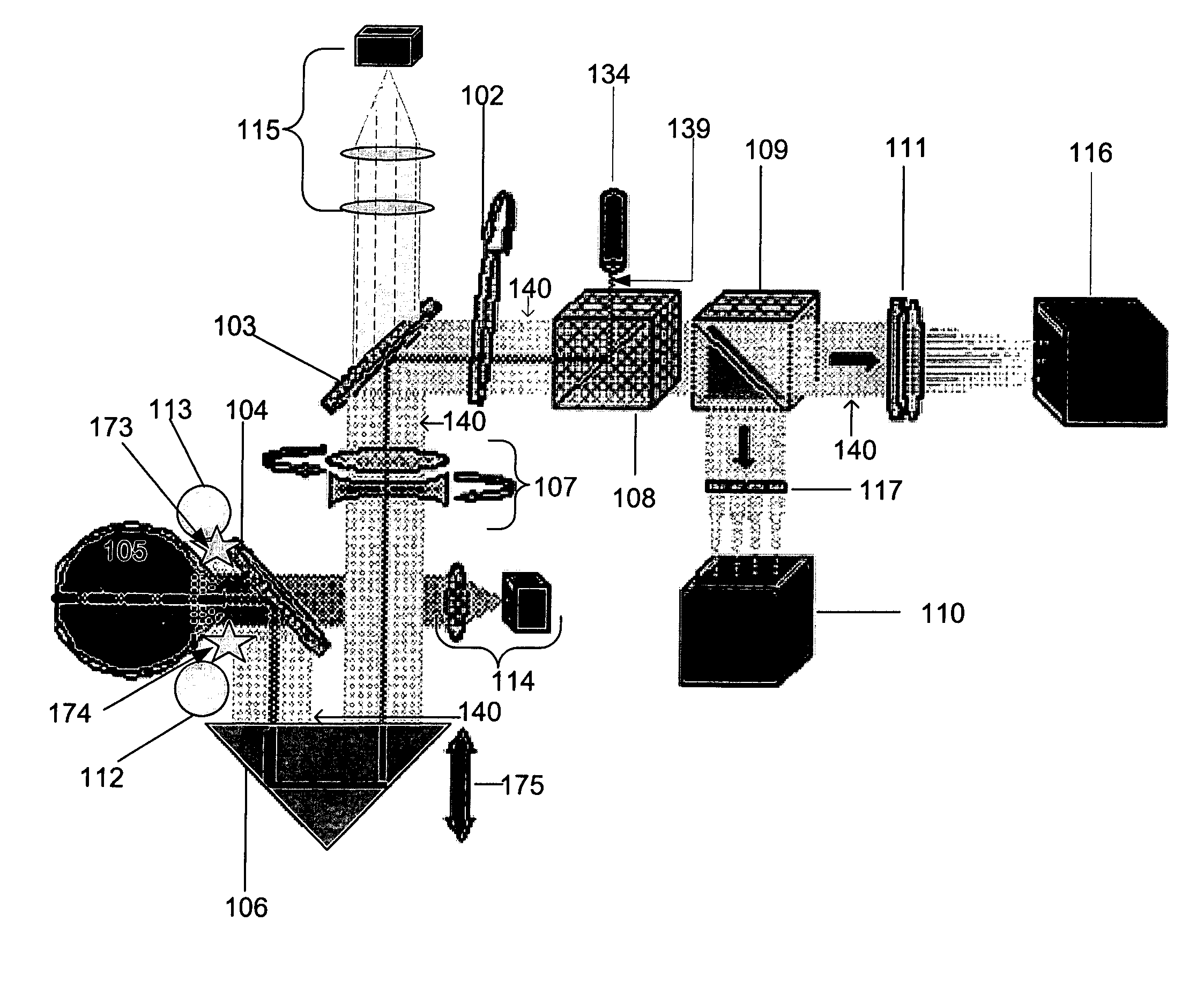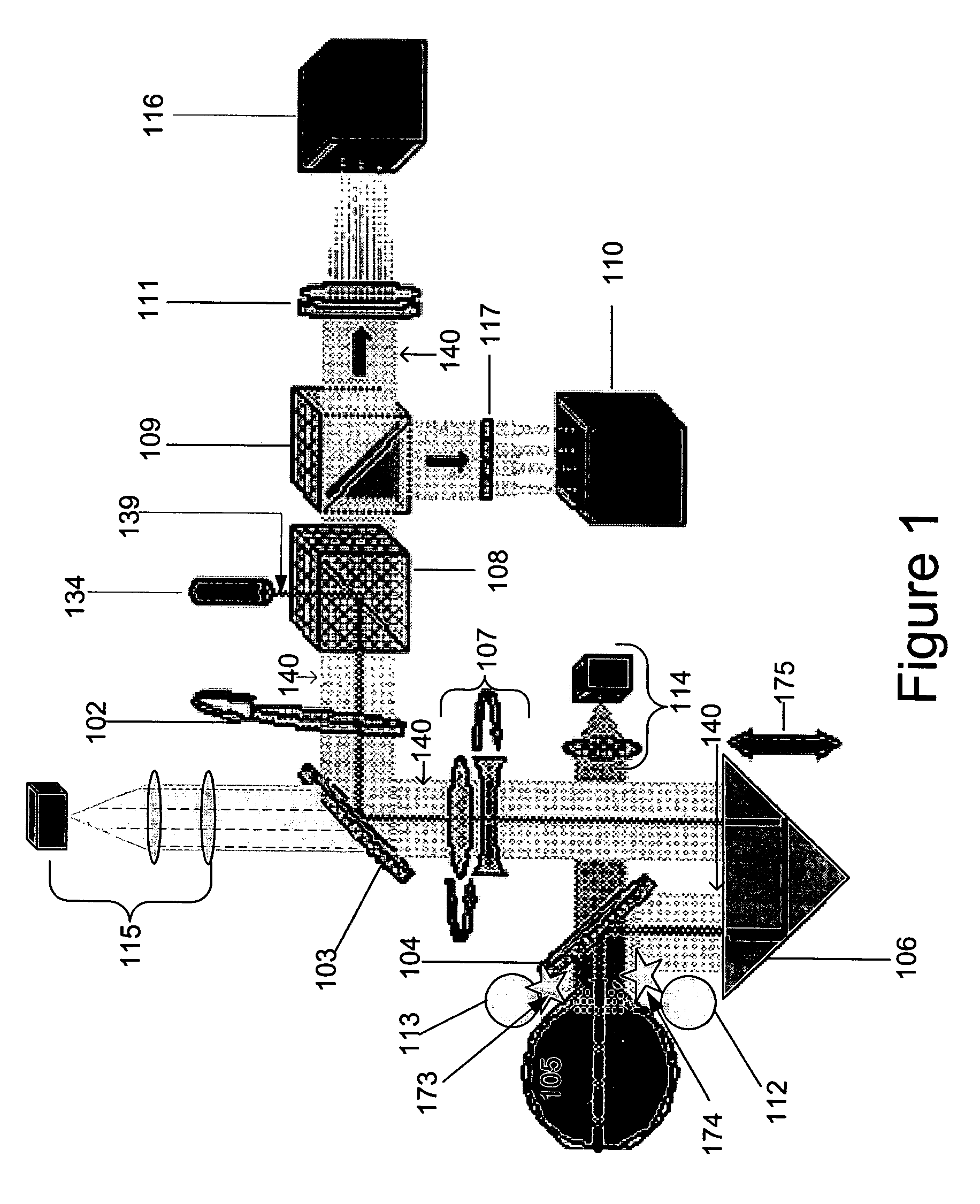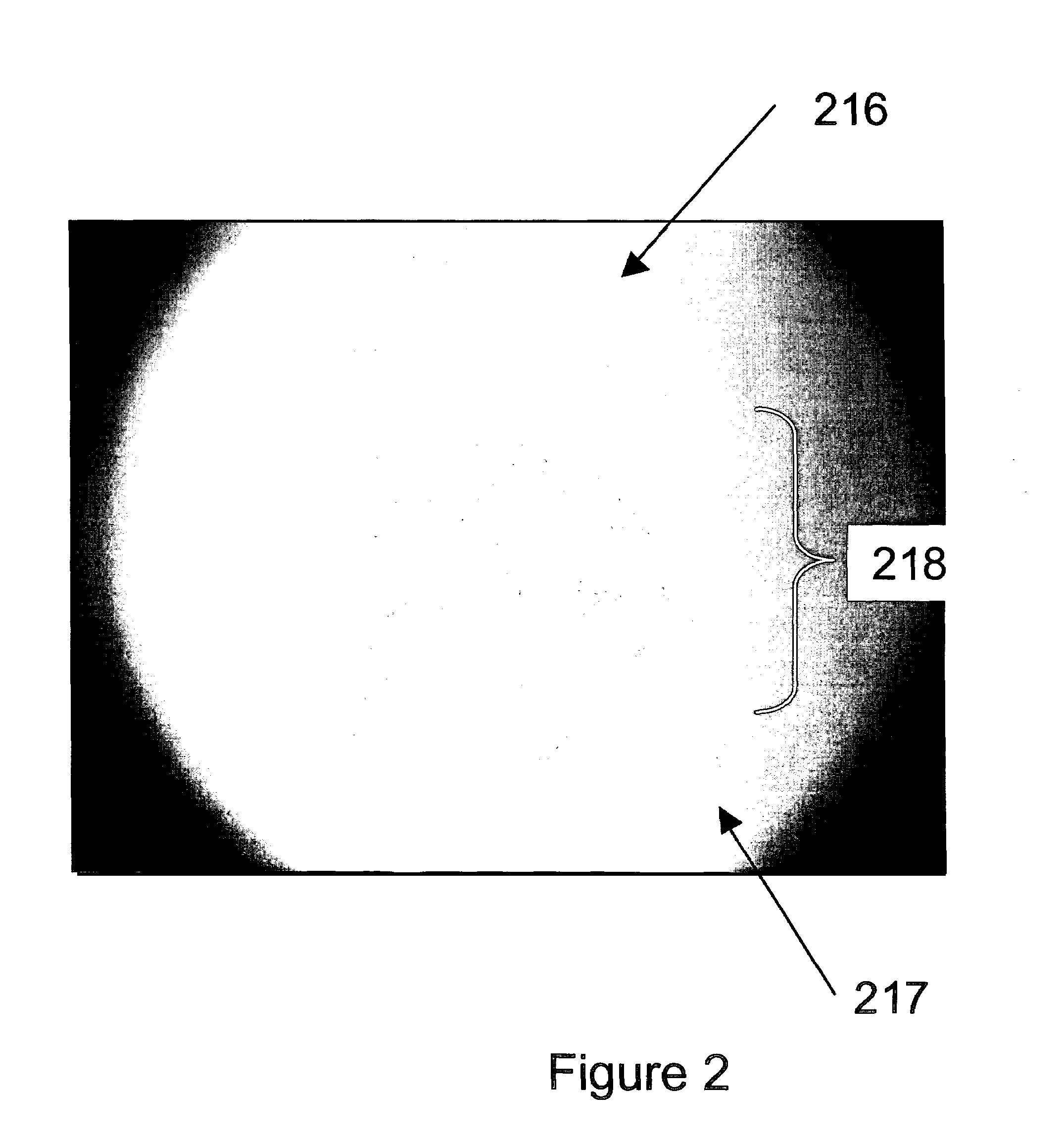Ophthalmic aberrometer for measuring aberrations in the eye
a technology of applied in the field of optic aberration measurement and aberration measurement in the eye, can solve the problems of large error of spot center estimation, non-uniformity of retinal reflection, and sh wavefront sensor, so as to improve specificity and improve dynamic range.
- Summary
- Abstract
- Description
- Claims
- Application Information
AI Technical Summary
Benefits of technology
Problems solved by technology
Method used
Image
Examples
examples
[0063]Referring now to FIG. 8, an image of an eye 863 and pupil 820 as seen through a near infrared detector is illustrated according to one embodiment of the present invention. Pupil diameter as illustrated by the double head arrow. The diameter is a value used for reducing the data and comparing subject data according to one embodiment of the present invention. An infrared light source (not shown) illuminates an eye and the illuminated eye is detected with an infrared detector (not shown). For example, the light source comprises an infrared diode that operates in the short wave infrared, such as at about 900 nm. The wavelength is invisible to the subject but readily observable with an infrared detector such as a CCD type of camera with an objective lens. The diameter of the pupil is determined for example by measuring the number of pixels of the detector across which the pupil diameter spans.
[0064]Referring now to FIG. 9, a reference beam on the retina is illustrated for a static ...
PUM
 Login to View More
Login to View More Abstract
Description
Claims
Application Information
 Login to View More
Login to View More - R&D
- Intellectual Property
- Life Sciences
- Materials
- Tech Scout
- Unparalleled Data Quality
- Higher Quality Content
- 60% Fewer Hallucinations
Browse by: Latest US Patents, China's latest patents, Technical Efficacy Thesaurus, Application Domain, Technology Topic, Popular Technical Reports.
© 2025 PatSnap. All rights reserved.Legal|Privacy policy|Modern Slavery Act Transparency Statement|Sitemap|About US| Contact US: help@patsnap.com



